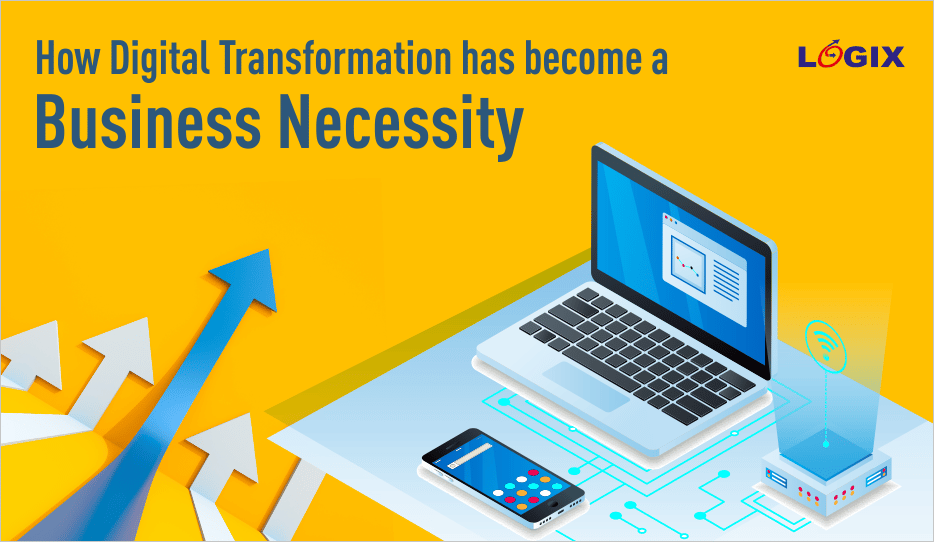
Over the past couple of years, businesses have absolutely had to evolve digitally. Reinventing a business with a digital transformation was once a strategy for business growth, to be taken up to gain competitive advantage. However, recent times have forced businesses to undergo digital transformation and it is no longer optional. Today, if your business is not digitally active and present, you will lose out on substantial business growth and even face interruptions.
How the pandemic changed the very metrics of business resilience
The pandemic was like snowfall in May – totally unexpected and unprecedented. Businesses were troubled with finding ways to keep servicing their customers.
Microsoft partnered with The Economist Intelligence Unit to understand how the Covid-19 pandemic made it imperative for businesses to go digital. The findings have been reported in The Transformation Imperative: Digital Drivers in the Covid-19 pandemic.
After the dust settled, it was found that businesses who had already begun their digital transformation journey before the pandemic had smoother sailing than businesses who were completely absent from the digital space. The prior businesses had the necessary skills and technology to navigate the pandemic world.
After the pandemic hit, digitization helped businesses not only to survive, but thrive. They were able to adapt swiftly to servicing their customers remotely. There were no harsh shifts in the way these businesses operated and hence customer retention didn’t take a dive.
The most impacted niche was perhaps the retail industry. Where having an eCommerce platform was once a good-to-have feature of the business, it suddenly became imminent for these businesses to shift to the digital world. Businesses that had once remained obstinate about not having a digital presence were forced to undergo a digital transformation; otherwise, they would’ve sunk!
In the manufacturing industry, there was a severe lack of support for remote operations. Smart businesses adopted technology and empowered themselves to not only support Covid-19 safety protocols and mitigate unnecessary risk of contact, but facilitate remote predictive monitoring, optimize production lines and improve supply-chain visibility.
But what about the employees themselves?
While digitization smoothened the processes of business, employee engagement was another challenge faced by business. WFH was new to most employees and keeping them motivated and goal-driven remotely was a necessity.
Here too, businesses found implementing technology helped achieve these targets. Remote conferencing platforms like Zoom, Skype, Google Meet helped with online meetings, while mailing and collaboration tools like Cloud Zimbra, Microsoft Teams helped with day-to-day communication and project management.
Case Study #1: To help its service technicians more efficiently repair and maintain its models, Mercedes-Benz has been using mixed reality and remote assist technologies to empower frontline technicians to diagnose and fix vehicles with expertise and efficiency. A problem that might have taken days of phone calls and emails to sort out can now be resolved with a 10-minute conversation.
Case Study #2: In retail, Marks and Spencer has made Teams available to all employees, enabling stores to connect with their frontline employees, fostering two-way communications and best-practice sharing.
Moving towards an integrated solution for digital transformation
As businesses settle into this new mode of working, business leaders are scouting the market for integrated solutions to support and sustain digital growth and efficiency.
Even as the pandemic subsides, the old ways of working will not make a return. Process flexibility and technological assistance will allow businesses to continue growing. Whatever solutions adopted must also work with cloud technologies as a majority of businesses now host portions of their application and data on the cloud for on-demand access and remote availability.
Upcoming solutions will have to be highly industry-specific for ensuring business resiliency and accelerating growth
Microsoft has worked closely with business leaders across various industries to innovate technology and tools to accelerate their transformation and remain resilient. They have expanded their industry investments with new industry clouds for healthcare, retail, manufacturing, financial services and non-profits.
These solutions are highly bespoke and tailored to the purpose and vision of these industries. Microsoft’s industry clouds are designed to be modular, extensible, and deployed in a plug and play fashion. Because digital objectives are not always very well defined, this allows businesses to start with the basic feature sets today and adapt and expand as needed. By bringing together the depth and breadth of Microsoft’s integrated, end-to-end cloud solutions (across Microsoft Azure, Microsoft 365, Microsoft Dynamics 365, LinkedIn and Microsoft Power Platform), Microsoft’s industry clouds can deliver a more seamless cloud experience with new capabilities, customizations and standards unique to each industry.
